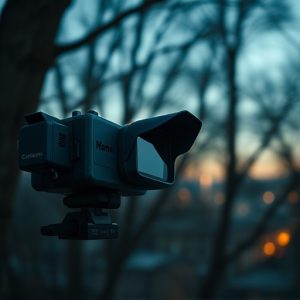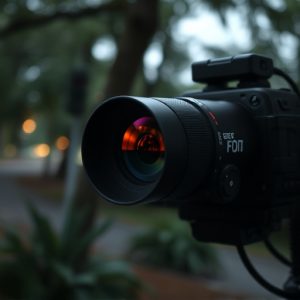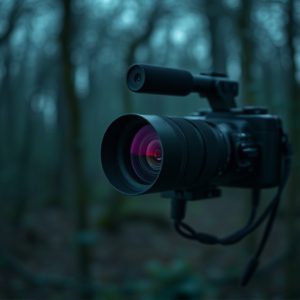RF Detector Sweep: Uncovering Battery-Operated Hidden Cameras in Childcare
Battery operated hidden childcare cameras offer discreet monitoring for enhanced child safety, but r…….
Battery operated hidden childcare cameras offer discreet monitoring for enhanced child safety, but require strategic placement and ethical considerations. RF (Radio Frequency) detector sweeps are essential tools for identifying these cameras, ensuring privacy protection. This guide outlines the process of conducting effective RF sweeps, emphasizing workspace preparation, calibration, systematic scanning, and careful inspection upon detection. Legal and ethical placement, transparency, regular testing, and adherence to local laws are crucial for responsible use of these cameras while prioritizing child safety and privacy.
In today’s digital era, ensuring safety in childcare settings is paramount. One effective tool in combating hidden surveillance equipment are RF detectors, specifically designed to identify battery-operated hidden cameras. This tutorial delves into the intricacies of conducting an RF detector sweep, equipping parents and caregivers with vital knowledge. Understanding how these cameras work and utilizing RF technology allows for proactive measures to protect children’s privacy. By following this step-by-step guide, you can enhance security and maintain a safe environment.
- Understanding Battery-Operated Hidden Cameras in Childcare Settings
- The Importance of RF Detector Sweep for Safety and Security
- Identifying and Locating Hidden Cameras Using RF Technology
- Step-by-Step Tutorial: Conducting an Effective RF Detector Sweep
- Best Practices and Precautions When Dealing with Childcare Surveillance Equipment
Understanding Battery-Operated Hidden Cameras in Childcare Settings
Hidden cameras equipped with battery-powered operations have become increasingly prevalent in childcare settings due to their discreet nature and ease of deployment. These compact devices allow parents and caregivers to monitor activities, ensuring child safety and security. Battery operated hidden childcare cameras offer a non-intrusive way to capture footage without raising awareness among children or staff, providing valuable insights into the environment.
When utilizing these cameras, it’s essential to prioritize privacy and ethical considerations. Legal guidelines regarding surveillance in such settings must be strictly adhered to, ensuring that all parties are aware of their existence. Proper placement is crucial; mounting them in hidden yet visible areas can maximize their effectiveness while respecting individual privacy.
The Importance of RF Detector Sweep for Safety and Security
In today’s digital age, where technology plays a pivotal role in our daily lives, ensuring privacy and security has become more complex. This is especially true for parents seeking to protect their children in childcare settings. Battery-operated hidden childcare cameras have emerged as a discreet solution, but their effectiveness relies heavily on proper detection techniques. One such crucial method is the RF (Radio Frequency) detector sweep.
The RF detector sweep is an essential tool for identifying and neutralizing hidden cameras that operate wirelessly. These devices emit radio signals, which can be detected by specialized equipment. By performing a sweep with an RF detector, parents or security professionals can uncover battery-operated hidden childcare cameras, ensuring the safety of children and peace of mind for concerned parents. This proactive measure is vital in maintaining a secure environment and preventing potential privacy breaches.
Identifying and Locating Hidden Cameras Using RF Technology
Identifying hidden cameras has become a crucial aspect of privacy and security, especially with the prevalence of battery-operated hidden childcare cameras. RF (Radio Frequency) technology offers an innovative solution in this regard. This technology is designed to detect electromagnetic emissions from devices like CCTV cameras, which often operate on specific frequencies. By employing specialized RF detectors, individuals can sweep areas for these signals, uncovering hidden cameras that might be filming without consent.
RF detector sweeps are particularly effective in identifying hard-to-detect miniature cameras, commonly used in childcare settings or other private spaces. These tiny devices often emit weak signals, making them challenging to locate visually. However, RF technology amplifies these signals, allowing users to pinpoint the exact position of a hidden camera. This method is discreet and non-invasive, ensuring that privacy breaches can be addressed without causing alarm.
Step-by-Step Tutorial: Conducting an Effective RF Detector Sweep
Step-by-Step Tutorial: Conducting an Effective RF Detector Sweep
Begin by preparing your workspace and gathering all necessary tools, including a battery-operated hidden childcare camera, an RF (Radio Frequency) detector, and any protective gear. Ensure the area to be swept is free from obstructions that could interfere with the signal. Turn off the camera and remove its batteries to prevent any unintended activation during the sweep. Next, calibrate your RF detector according to the manufacturer’s instructions. This step ensures accurate readings and helps you identify potential signals more effectively.
With the detector calibrated, position it at a safe distance from the area of interest, scanning in a systematic pattern. As you move across different zones, observe the detector’s display closely. Look for sudden spikes or steady signals that could indicate the presence of hidden cameras. If a strong signal is detected, carefully inspect the area using the camera’s viewfinder or a separate monitor if available. Remember to maintain a safe distance and avoid alerting any potential devices during this process.
Best Practices and Precautions When Dealing with Childcare Surveillance Equipment
When dealing with childcare surveillance equipment, especially battery-operated hidden cameras, it’s crucial to prioritize safety and ethical considerations. Always ensure that any hidden cameras are legally placed in areas where there is a reasonable expectation of privacy, such as within a child’s room or play area, but not in common spaces like bathrooms or bedrooms shared with others. It’s also important to inform all parties involved—parents, caregivers, and children—about the presence of surveillance equipment to maintain transparency and trust.
Regularly testing and maintaining these devices is essential for optimal performance and accuracy. Keep records of when and where each camera was placed, along with battery replacement schedules, to ensure continuous monitoring without interruptions. Additionally, familiarize yourself with local laws regarding hidden cameras to comply with privacy regulations, ensuring that the use of such equipment remains lawful and ethical.
The detection of battery-operated hidden childcare cameras using radio frequency (RF) technology is a crucial step in ensuring the safety and security of young minds. By understanding how these cameras operate and employing effective RF detector sweeps, professionals in childcare settings can proactively identify and mitigate potential privacy breaches. This tutorial has outlined a comprehensive guide to navigating this process, from recognizing the devices’ unique characteristics to implementing best practices during the sweep. With these measures in place, caregivers can create a safer environment for children while also respecting their privacy.


